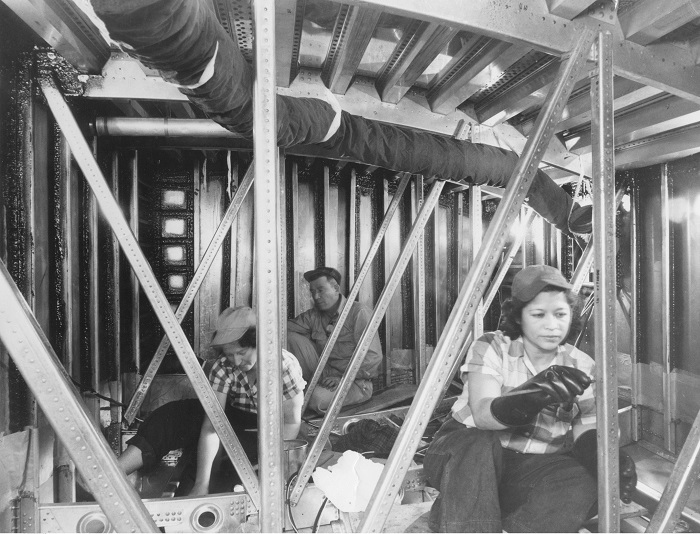By Dr. Ricardo Romo
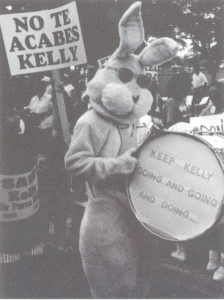 The Port of San Antonio, with 12,000 workers in more than 80 private and public-sector companies today, came about with the closure of Kelly Air Force Base in 1995. Over the past twenty years the Port has evolved as a $5 billion contributor to the regional economy. The transformation of Kelly Air Force Base and how it boosted San Antonio’s economic development is the subject of this story. Kelly had its beginning in 1917 when the United States entered World War I. Kelly Field was one of thirty-two Air Service training camps created. The base began when military leaders viewed a cotton field west of the city as the ideal place for training pilots to fly. Its isolation and flat terrain made the location perfect for take offs and landings. The ample space also allowed building aircraft hangers and fuel depots.
The Port of San Antonio, with 12,000 workers in more than 80 private and public-sector companies today, came about with the closure of Kelly Air Force Base in 1995. Over the past twenty years the Port has evolved as a $5 billion contributor to the regional economy. The transformation of Kelly Air Force Base and how it boosted San Antonio’s economic development is the subject of this story. Kelly had its beginning in 1917 when the United States entered World War I. Kelly Field was one of thirty-two Air Service training camps created. The base began when military leaders viewed a cotton field west of the city as the ideal place for training pilots to fly. Its isolation and flat terrain made the location perfect for take offs and landings. The ample space also allowed building aircraft hangers and fuel depots.
San Antonio’s large Mexican American community, for many years largely concentrated in the southern and western portion of the city, owes much of its economic stability to the presence of Kelly Air Force Base. The base, located in the western edge of the city, boosted Mexican American employment over a seventy-five year period.
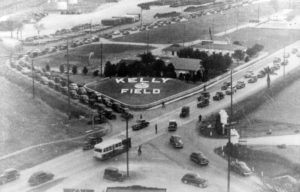 In the postwar (WWII) era, Kelly Field, as it was known, remained for many decades the largest industrial employer in San Antonio, with over 25,000 employees at its peak. Scholars estimate that Mexican Americans represented sixty percent of that workforce. Over its eighty-five year existence, jobs at Kelly made it possible for thousands of Mexican American families to move into the middle class.
In the postwar (WWII) era, Kelly Field, as it was known, remained for many decades the largest industrial employer in San Antonio, with over 25,000 employees at its peak. Scholars estimate that Mexican Americans represented sixty percent of that workforce. Over its eighty-five year existence, jobs at Kelly made it possible for thousands of Mexican American families to move into the middle class.
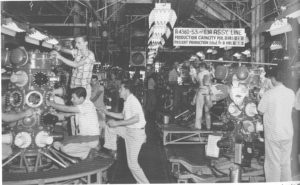 Edward Riojas, a long time employee at the base, told Texas Public Radio in 2011 that Kelly Field offered many opportunities for advancement. He commented: “People like myself who came in with no skills, we got an equal shot at promotions, and we got our promotions. And then our kids would go to school, and they would become lawyers and doctors and Indian chiefs and everything else.” All large urban communities in the United States had experienced economic disruptions associated with the Great Depression in the 1930s. Few had poorer neighborhoods than San Antonio. Latinos living in the south and Westside of San Antonio were especially impacted by the lack of jobs and reliance on low paying unskilled work.
Edward Riojas, a long time employee at the base, told Texas Public Radio in 2011 that Kelly Field offered many opportunities for advancement. He commented: “People like myself who came in with no skills, we got an equal shot at promotions, and we got our promotions. And then our kids would go to school, and they would become lawyers and doctors and Indian chiefs and everything else.” All large urban communities in the United States had experienced economic disruptions associated with the Great Depression in the 1930s. Few had poorer neighborhoods than San Antonio. Latinos living in the south and Westside of San Antonio were especially impacted by the lack of jobs and reliance on low paying unskilled work.
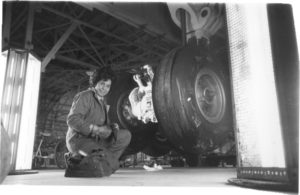 With the entry of the United States into World War II in December of 1941, Kelly Field changed the workforce opportunities for the better. In the process, Kelly Field opened up new opportunities for Westsiders to buy homes and send their children to college.
With the entry of the United States into World War II in December of 1941, Kelly Field changed the workforce opportunities for the better. In the process, Kelly Field opened up new opportunities for Westsiders to buy homes and send their children to college.
Albert Curtis, author of Fabulous San Antonio, wrote of the World War II days when the base “reached a spectacular peak” and stationed 6,000 officers and enlisted men and employed 24,000 civilians, which included 10,000 women.
Eileen Pace, of Texas Public Radio, commented that “over the years, civil service workers in the hangers at Kelly Air Force Base fine-tuned fighter aircraft and giant cargo planes that transported people, tanks, equipment, medical teams, wounded soldiers and supplies for humanitarian missions.”
 At age 19, Fred Herrera started his career with Kelly Field, got married, and built his own house with the help of his dad. He and his wife lived in the same house in the Westside for the 40 years that Herrera worked at Kelly Field. Herrera, Deputy Chief of the Industrial Systems Engineering Division at Kelly, recalled that at the height of the Vietnam War in 1970, Kelly Field employed 18,000 workers, the majority of them from the Latino communities south and west of the base.
At age 19, Fred Herrera started his career with Kelly Field, got married, and built his own house with the help of his dad. He and his wife lived in the same house in the Westside for the 40 years that Herrera worked at Kelly Field. Herrera, Deputy Chief of the Industrial Systems Engineering Division at Kelly, recalled that at the height of the Vietnam War in 1970, Kelly Field employed 18,000 workers, the majority of them from the Latino communities south and west of the base.
When Kelly Field closed in 2001, it was the oldest permanent air base in the United States. More importantly to the Westside, it was its largest employer. For eighty-five years Kelly Air Force Base played a significant role in America’s military defense. Often not mentioned is its role in the creation of a middle class Mexican American community in San Antonio.

